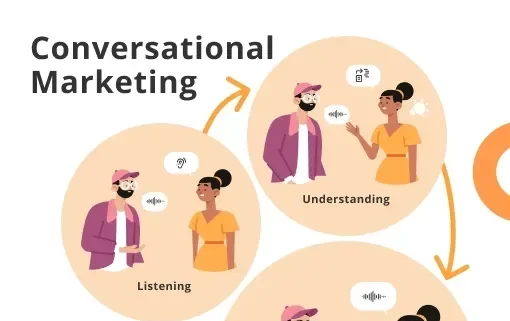Voice Search: The Conversational Future of the Web
Voice search has quickly moved from being a novelty to a daily habit for millions of people. Instead of typing a query into Google, users now ask their phones, smart speakers, or even their cars for instant answers. Assistants like Alexa, Siri, and Google Assistant have made it easy to get information hands-free—whether it’s checking the weather, finding a nearby restaurant, or ordering groceries.
The adoption numbers tell the story: studies show that more than half of smartphone users engage with voice search regularly, and smart speaker sales continue to grow each year. This shift isn’t just about convenience; it reflects how people naturally prefer to communicate. Speaking feels more intuitive than typing, which makes voice-driven search faster and more conversational.
Advances in artificial intelligence have played a big role in this rise. Tools like Claude have made natural language understanding more advanced, allowing systems to interpret complex questions with better accuracy. For digital marketers, this change matters because the way people search directly shapes how brands need to be discovered. Optimizing for voice is no longer optional—it’s becoming essential.
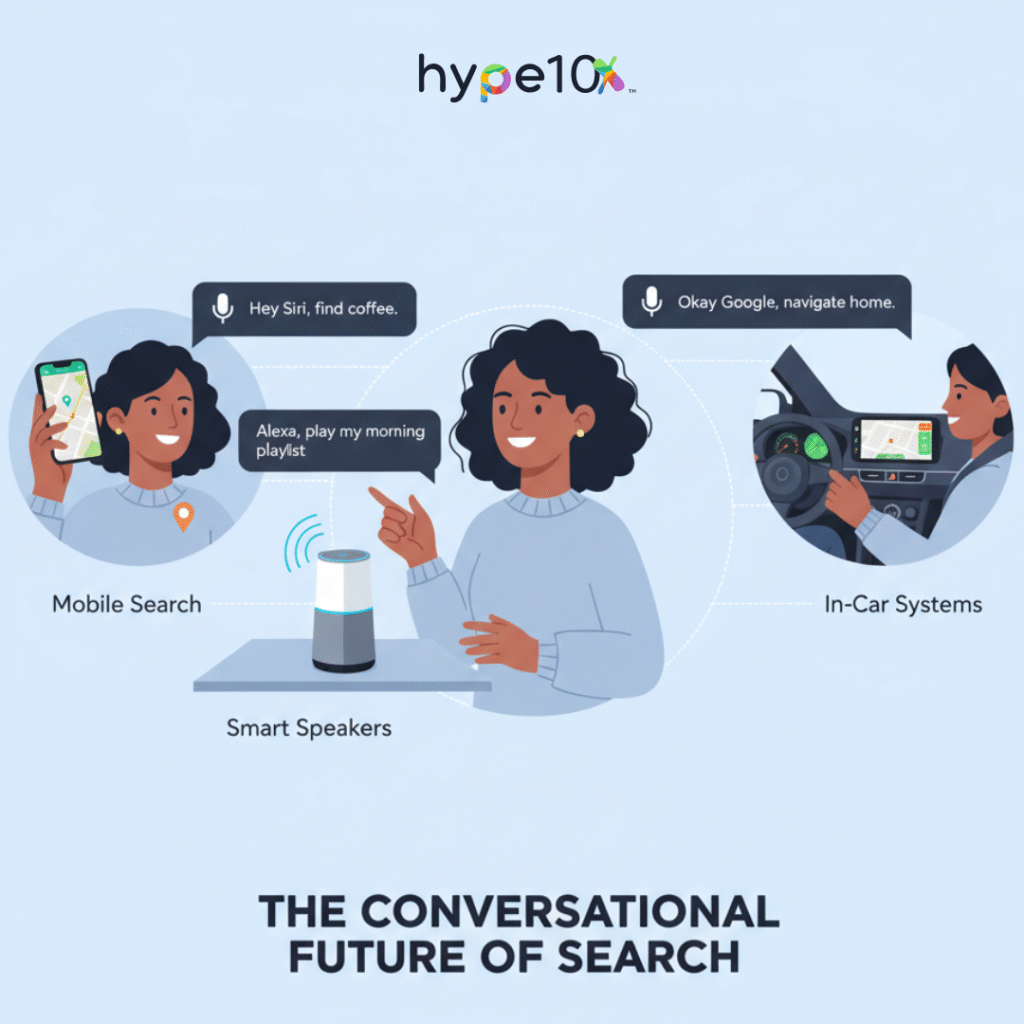
The Evolution of Search Behavior
The evolution of search behavior marks a significant shift from traditional, keyword-focused queries to natural, conversational questions.
Text queries were once dominated by short, fragmented keywords (e.g., “best pizza NYC”), primarily due to the effort of typing. However, the rise of voice search on smartphones and smart speakers has made speaking a query more convenient, leading to longer, more natural-sounding questions (e.g., “What’s the best restaurant near me that’s open until 10 PM?“).
This change reflects a profound shift in natural language and user intent. Users now expect search engines to understand the meaning and context behind their full sentences, not just the individual words. The growth of these question-based searches—often starting with “Who,” “What,” “Where,” or “How”—indicates that people are treating search engines as personal, conversational assistants, demanding more direct and immediate answers. This requires content creators and search algorithms to focus on addressing the user’s intent comprehensively, rather than simply matching a handful of keywords.
Why Voice Search is Growing
The popularity of voice search comes down to one thing: convenience. Speaking is faster than typing, and when you’re driving, cooking, or multitasking, it’s often the only practical option. Asking, “Hey Google, where’s the nearest pharmacy?” is much easier than stopping to type the same query into a search bar.
Another reason for this growth is how deeply voice assistants are embedded in our daily lives. Almost every smartphone comes with one, and smart speakers like Amazon Echo and Google Home have become household staples. For many people, voice queries are now a natural part of their routine, whether it’s checking the news in the morning or playing music in the evening.
Artificial intelligence has also pushed voice search forward. Natural language processing (NLP) has improved to the point where devices can understand context, accents, and even conversational follow-ups. This accuracy makes people trust the results more and rely on voice search more often.
Just as digital media reshaped how we consume content, voice search is shaping how we discover it. For marketers, this means adapting to new behaviors and ensuring their brand is visible when someone asks their device a question.
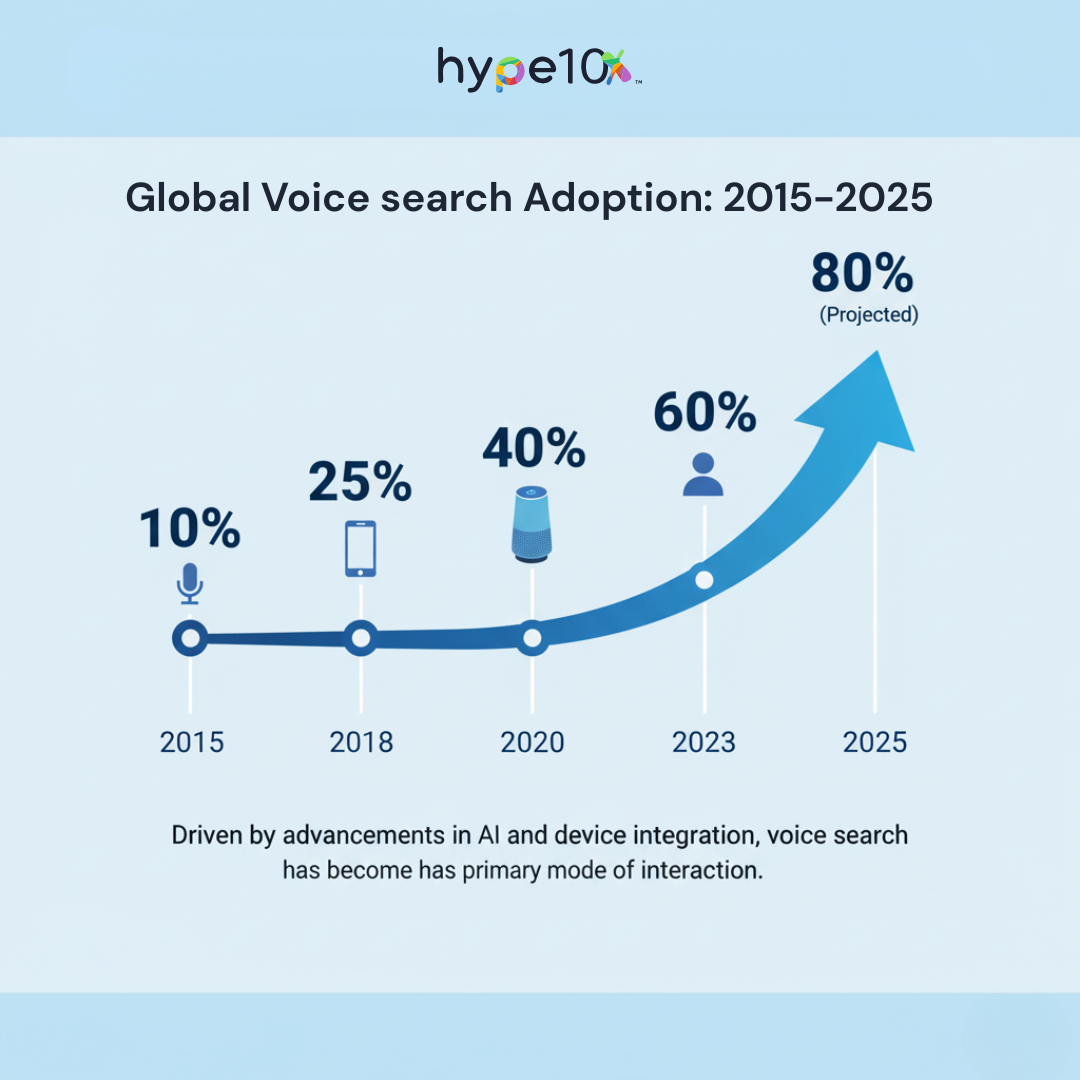
The Impact on SEO & Digital Marketing
Voice search isn’t just changing how people ask questions—it’s changing how search engines deliver results. Instead of scrolling through a list of ten blue links, users often get one clear spoken answer. That puts enormous weight on being the source that assistants like Alexa or Google choose to read out loud.
This is where featured snippets, also called “position zero,” become critical. When someone asks, “What’s the best way to clean leather shoes?” the assistant pulls from a snippet at the top of Google. If your content is structured to answer that question directly, you have a much better chance of being that chosen source.
Local SEO has also become more important. Many voice searches are location-driven—queries like “coffee shop near me” or “open pharmacy now.” Businesses that keep their Google Business Profile updated and consistent across platforms are far more likely to show up in these results.
Keyword strategy is shifting too. Traditional SEO often focuses on short, broad keywords, but voice queries are conversational and specific. Think long-tail phrases and natural-sounding questions. Structuring content around how people actually talk is now just as important as keyword density.
We explored this in detail in our SEO best practices guide, and voice queries make structured optimization even more critical. For digital marketers, the takeaway is clear: if your strategy doesn’t adapt to voice-driven behaviors, you risk being invisible in a world where users expect quick, spoken answers.
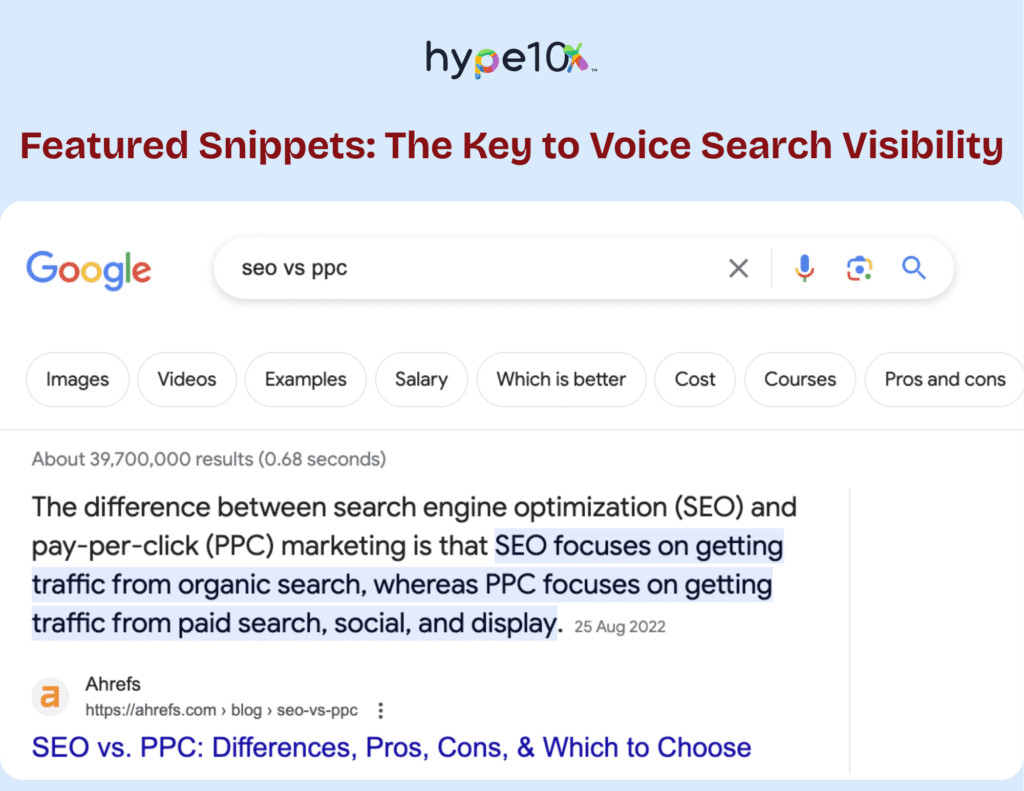
How to Optimize for Voice Search
Optimizing for voice search isn’t about reinventing SEO. It’s about fine-tuning your strategy to match how people naturally talk. The difference between typing “best pizza NYC” and asking “Where can I get the best pizza in New York City?” is small, but in search terms, it matters a lot.
The first step is focusing on conversational keywords. Instead of targeting only short, competitive phrases, build content around natural questions your audience would actually ask. This is why FAQ pages are so valuable. By answering questions directly—“How long does shipping take?” or “What’s the safest way to clean leather shoes?”—you create content that aligns with the way people use voice assistants.
Long-tail queries play a big role here too. They may not bring in the highest volume, but they often bring in the most qualified traffic. People searching with longer, specific phrases tend to be further along in their decision-making, which can translate into higher conversions.
Structuring content for featured snippets is another must. Use clear headings, bullet points, and concise answers so Google can easily pull from your page. Featured snippets aren’t just valuable for visibility on the screen—they’re also the source that voice assistants read aloud. If you win that spot, you’re not only ranking high but also becoming the voice of the answer.
Don’t overlook technical factors either. Most voice searches happen on mobile devices, so site speed and mobile responsiveness are non-negotiable. Schema markup can also help search engines better understand your content, making it easier to surface for specific voice queries.
Finally, local SEO is a huge driver of voice traffic. Queries like “nearest coffee shop” or “dentist open now” dominate voice searches. Keeping your Google Business Profile updated with accurate NAP (name, address, phone) information is essential if you want to show up in those results.
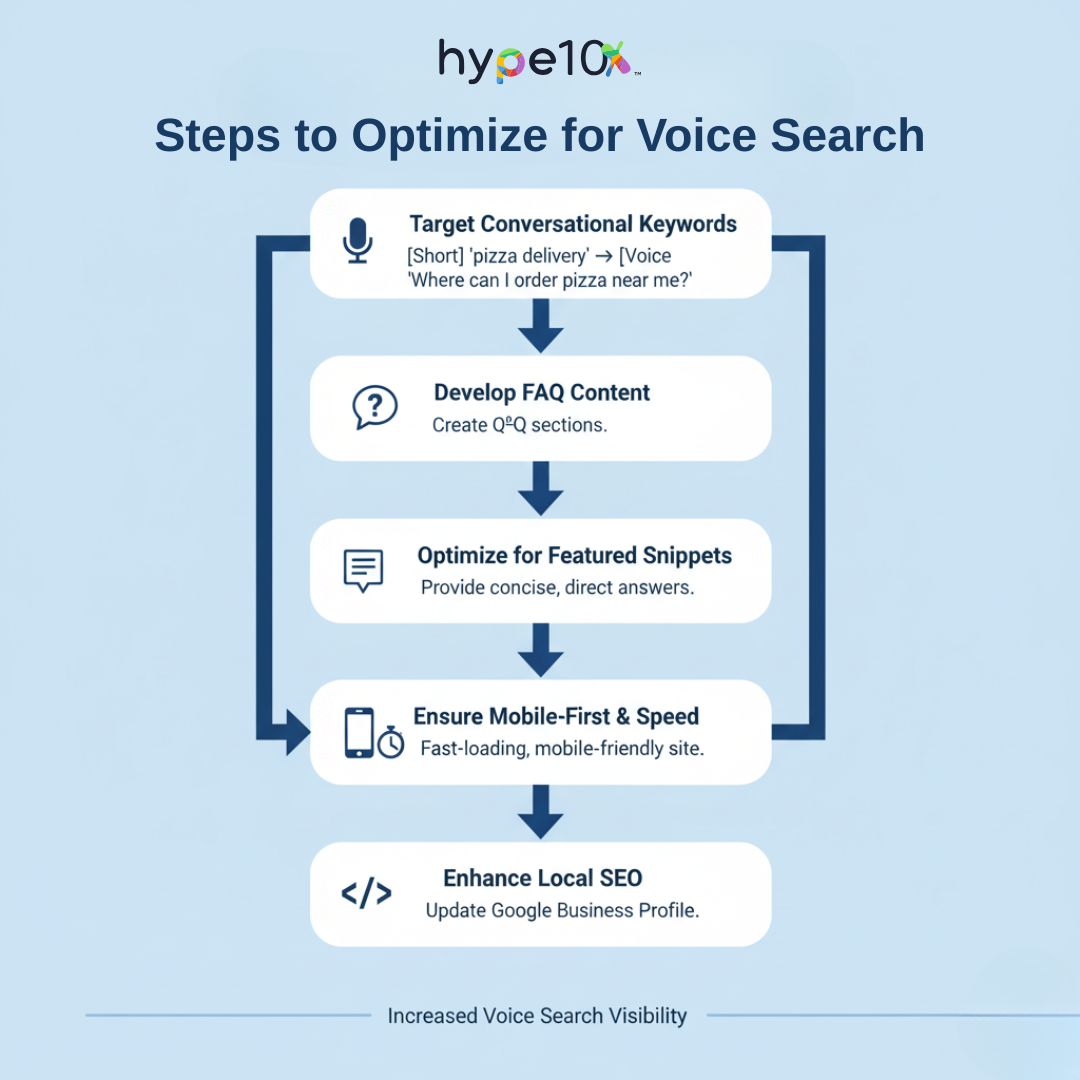
Voice Search and E-commerce
Shopping is changing, and voice search is playing a big role in that shift. More people are using Alexa, Google Assistant, and Siri not just to ask for directions or play music, but to actually shop. Whether it’s reordering household items, adding products to a shopping list, or checking delivery updates, voice commands are becoming part of the buying journey.
For e-commerce brands, this creates both opportunities and challenges. Voice commerce is usually driven by quick, simple requests — “Order more paper towels” or “Find me the best Bluetooth headphones under $50.” That means your product descriptions, categories, and reviews need to be optimized for natural, conversational queries. Clear, straightforward product titles and structured content make it easier for assistants to pick your listing.
Customer reviews also matter more in a voice-first world. Assistants often reference ratings and feedback when suggesting products, which means social proof directly influences which items get recommended. Just as SEO made written content more discoverable, voice search is reshaping how products surface to customers. Brands that prepare now will be the ones customers “ask for by name” tomorrow.

Industries Benefiting the Most
The transition to voice search and voice commerce has significantly benefited several key industries, primarily those driven by local intent, immediate need, and repeat purchases.
Industries Benefiting the Most
The following industries are seeing the greatest advantage from the shift to conversational and hands-free search:
- Local Businesses (Restaurants, Salons): These businesses thrive on proximity-based searches, where voice assistants excel. Queries like, “What’s the best restaurant near me?” or “Find a salon that’s open now” prioritize location, hours, and directions. Businesses with strong local SEO (especially an optimized Google Business Profile) are instantly provided as the single best answer, driving high-intent foot traffic and calls.
- Healthcare (“Doctor near me”): Voice search meets the urgent, high-value need for nearby medical services. People frequently search for “urgent care near me” or “find a doctor near me who takes [Insurance]”. For non-emergency needs, voice also allows for convenient, hands-free booking of appointments, which is a key consumer desire.
- Travel & Hospitality: This sector benefits from quick, real-time queries made while traveling or planning. Users rely on voice for on-the-go needs like: “Book a hotel tonight in Chicago,” “What are the check-in times?”, or “Find the nearest gas station.” This speed and convenience help users make instantaneous booking decisions.
- Retail/E-commerce: Voice commerce is fundamentally changing shopping, particularly for consumables and repeat orders. Customers use voice to quickly reorder items they run out of, such as “Alexa, order coffee beans” or “Add toothpaste to my cart.” This hands-free, frictionless checkout process streamlines purchases, drastically reducing cart abandonment and increasing customer loyalty for subscription-based and frequent-purchase products.
Challenges of Voice Search Marketing
The growth of voice search and commerce introduces distinct challenges for marketers and businesses:
- Privacy & Data Concerns: This is a major hurdle for consumer trust. Voice assistants are “always listening,” leading to user anxiety about unauthorized recordings and the collection of highly personal biometric data (voice, accent, emotion). For marketers, this limits data collection, making it difficult to track the full customer journey or get deep insights into user behavior, as much of the interaction remains private.
- Misinterpretation of Queries: Despite advancements, voice recognition technology is not perfect. Errors occur due to accents, background noise, or colloquial language/slang. This can lead to the assistant misunderstanding a user’s request, providing irrelevant search results, or even making the wrong purchase, creating a frustrating user experience that damages brand trust.
- Analytics Limitations: Unlike traditional screen-based searches, which offer extensive click, view, and conversion data, voice interactions are often short, yielding only one spoken answer. This makes standard marketing analytics less effective. Marketers struggle to measure the true Return on Investment (ROI) of voice optimization because it is difficult to track the performance of keywords, understand user engagement, or attribute conversions accurately within this hands-free environment.

Future Trends in Voice Search
The future of voice search will be driven by advancements in Artificial Intelligence and an expansion into every facet of daily life.
One major trend is the integration of advanced AI assistants (ChatGPT, Claude) directly into the search experience, moving from simple fact-retrieval to complex, conversational, and often multi-step task completion. These powerful Large Language Models (LLMs) will power more intuitive and predictive interactions.
Global adoption is accelerating through superior multilingual and regional support, allowing assistants to better understand varied accents, dialects, and languages, opening up vast new markets for voice commerce. Simultaneously, voice will become the primary interface for new categories of hardware, including smart cars and IoT devices, enabling everything from hands-free navigation and entertainment to controlling home appliances via the vehicle dashboard.
Crucially, the next generation of voice search will deliver highly personalized experiences. Leveraging contextual understanding and immense conversational memory, advanced AI models like Claude and others will anticipate user needs, offer tailored recommendations based on past behavior, and manage complex schedules across devices with a level of seamless continuity that traditional search cannot match. This shift will transform marketing from optimizing for single keywords to optimizing for ongoing, hyper-relevant conversations.

Conclusion
Voice search is no longer a futuristic concept—it is a rapidly growing, present-day reality transforming how consumers interact with the digital world, from asking simple questions to engaging in voice commerce via smart devices.
To remain competitive, businesses must immediately pivot their strategies to focus on conversational language, long-tail keywords, and optimized featured snippets. Achieving this early adoption is critical, as it secures a valuable first-mover advantage in a voice-first environment where only one result is spoken aloud. This ensures your brand is the trusted, authoritative answer.
For a deeper dive into adjusting your online strategy to meet these demands, be sure to explore the latest articles on Digital Media and SEO. The convergence of advanced AI and pervasive voice technology makes optimizing for the spoken word an essential element of modern digital success.








